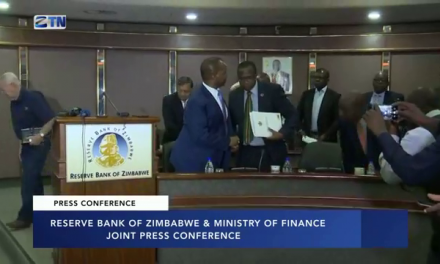The importance of SMEs to the Zimbabwean economy has always been topical. There are so many data points that point to that reality. There is even a cabinet ministry specifically for SMEs. That goes to show how important SMEs are regarded in Zimbabwe. Recently it was reported that Zimbabwean SMEs are contributing over US$8 billion to the GDP. This was the result of the 2022 FinScope Micro, Small and Medium Enterprises (MSME) survey. The survey was conducted by Finmark Trust.
What Really Is An SME?
SME stands for Small and Medium Enterprise. Some may call it a Small to Medium Enterprise. The definition of an SME is mostly contextual across the world. The tenets of what an SME is here in Zimbabwe will differ from, for instance, Europe and the US. For example, in Europe, an SME is a business with 50 to 250 employees. That attribute also goes with certain annual turnovers, total assets, and ownership dynamics. Typically, determination for being an SME is premised on the number of employees, annual turnover, and total assets. Thus you have to understand that definitions of SMEs differ but the principle is very much the same.
Interestingly, the International Chamber of Commerce (ICC) consider a business with 100 to 2000 employees as an SME. In Zimbabwe, according to ZIMRA, an SME is a business with between 5 and 40 employees. For the FinScope survey, they considered enterprises with less than 75 employees. Nowadays the common term has shifted from SME to MSME. MSME stands for Micro, Small and Medium Enterprises. The term is simply meant to also include what are called micro-enterprises. For instance, enterprises run by one person.
Breaking Down The MSME Acronym
We have established it stands for Micro, Small and Medium Enterprises. Micro enterprises are those with 5 or fewer employees and US$30 000 or less in annual turnover. Small enterprises are those with 6 to 30 employees and an annual turnover ranging between US$30 000 and US$500 000. Those with 31 to 75 employees are medium enterprises and have annual turnovers between US$500 000 and US$1 000 000. These details can help you accurately categorize your business.
Some Notable Insights From The 2022 FinScope MSME Survey
The survey brought out some interesting insights. Some of the notable ones are as follows:
The Zimbabwean Economy Now MSME Dominated
The combined annual turnover by MSMEs in Zimbabwe is US$14.2 billion. The MSME survey showed that over US$8.6 billion is now contributed to Zimbabwe’s GDP by those MSMEs. That constitutes over 60 percent of Zimbabwe’s GDP. Bear in mind that this coming from roughly 2.7 million MSMEs in Zimbabwe.
Number MSMEs In Zimbabwe And People Employed
Around 2012, roughly 6 million Zimbabweans used to be employed by SMEs. Today the number is much lower. Today there are about 2.7 million MSMEs in Zimbabwe and they employ roughly 3 million Zimbabweans.
MSME Formalization Has Improved Over The Years
The last FinScope survey was done in 2012. At that time only 18 percent of MSMEs were formalized. Today about 95 percent of MSMEs are formalized. That would explain why MSMEs are contributing the most to GDP. It is because they are contributing taxes due to their being formally registered entities. No wonder why there are so many businesses offering company registration services.
It is apparent many Zimbabweans are registering their businesses. More than 70 percent of registered taxpayers in Zimbabwe are MSMEs. Interestingly it was once reported a few years back that less than 20 percent of them actually contribute towards taxes. That seems to have changed now. That is due, in part, to the relative affordability of company registration. Plus there are now many service providers who can register on one’s behalf making it easier.
Majority Of MSMEs Located In Central Business Districts
The survey showed that most MSMEs are concentrated in central business districts. The most notable ones are Harare, Bulawayo, and Mutare. Other hotspots where MSMEs are mainly found are near border posts and locations along the Great Dyke.
MSME Sizes And Scope
It turns out the vast majority of MSMEs in Zimbabwe are sole proprietorships (81.4 percent). Next in line are enterprises with 1 to 5 employees (14.8 percent). Thus, all in all, micro-enterprises are the most common MSME type in Zimbabwe (96.2 percent). Next up are small enterprises, those with 6 to 30 employees (3.4 percent). Lastly are medium enterprises, those with 31 to 75 employees (0.4 percent). Overall, 60 percent of Zimbabwean MSMEs are owned by females whilst 40 percent are owned by males.
Top 3 MSME Sectors
The top sector amongst Zimbabwean MSMEs is agriculture or farming (39.2 percent). There are over 643 000 business owners in this space. Second place is wholesale or retail (37.3 percent). Wholesale or retail has over 611 000 business owners. Third place is tourism (5.3 percent) with over 86 000 business owners. Thus over 80 percent of MSMEs in Zimbabwe focus on agriculture, wholesale or retail, and tourism.
MSME Distribution In Zimbabwe
The percentage distribution of the total number of MSMEs in Zimbabwe by province is as follows: Mashonaland West (17 percent), Midlands (16 percent), Mashonaland East (15 percent), Mashonaland Central (15 percent), Masvingo (13 percent), Harare (13 percent), Manicaland (5 percent), Matabeleland North (4 percent), Bulawayo (2 percent), and Matabeleland South (1 percent).
Whilst it is clear that MSMEs are contributing much to Zimbabwe’s GDP, there is still room for more. A substantial number of MSMEs still struggle to access funding. Support systems such as incubators and accelerators are still not widespread in Zimbabwe. There are still limitations to being part of the digital economy. There has been significant progress in increasing financial inclusion. However, digital inclusion is still in need of much attention. These are some of the challenges that need to be addressed. Otherwise, the MSMEs in Zimbabwe are doing a great job of stirring economic activities.









Thank you so much for vital information on the Mirco Small and Medium Enterprise. We are looking forward for much post concerning the subject of Mirco Small and Medium Enterprise.